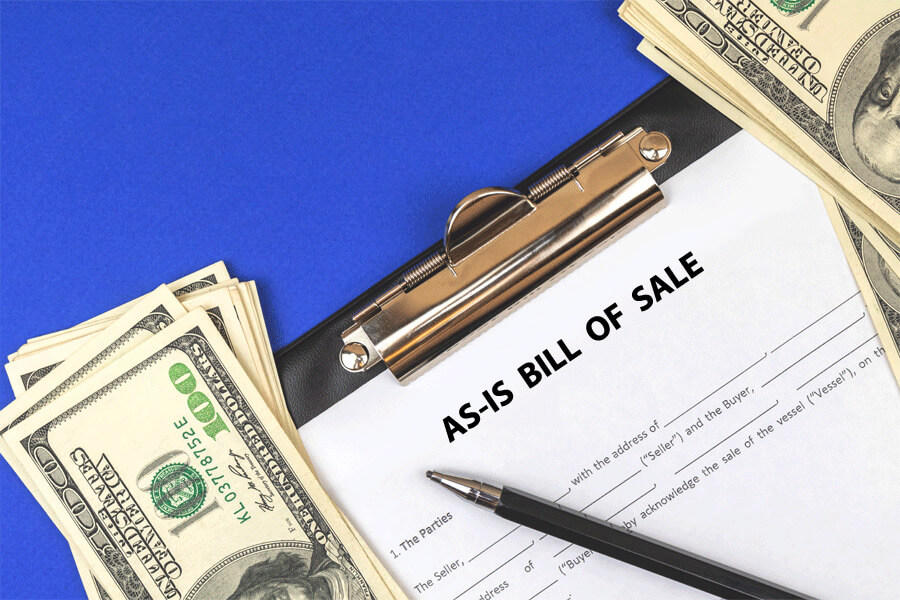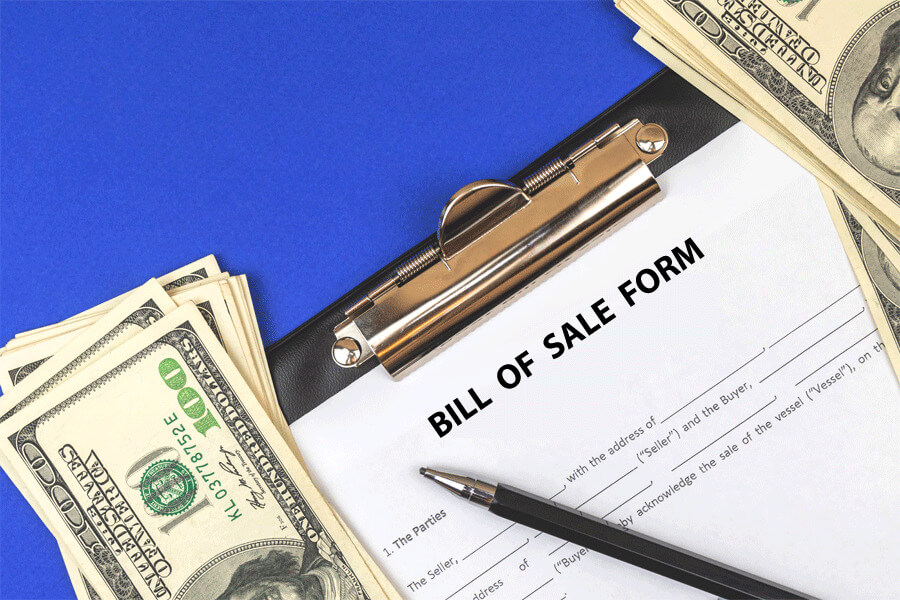The livestock bill of sale is a business document that shows the transfer of ownership of any farm animal like cows, sheep, pigs, horses, chickens, hens, and other domestic animals(s).
The livestock owner and the potential buyer come to a consensus and write down the particular details relating to the sale creating the BOS.
This includes key information about the business deal, such as the price, particulars about the buyer and seller, details about the animal, vet clearance, etc. All livestock business transactions require this form as evidence of ownership. In addition, in case of any dispute regarding taxation and legal matters, it acts as proof of the actual transaction.
Free Templates
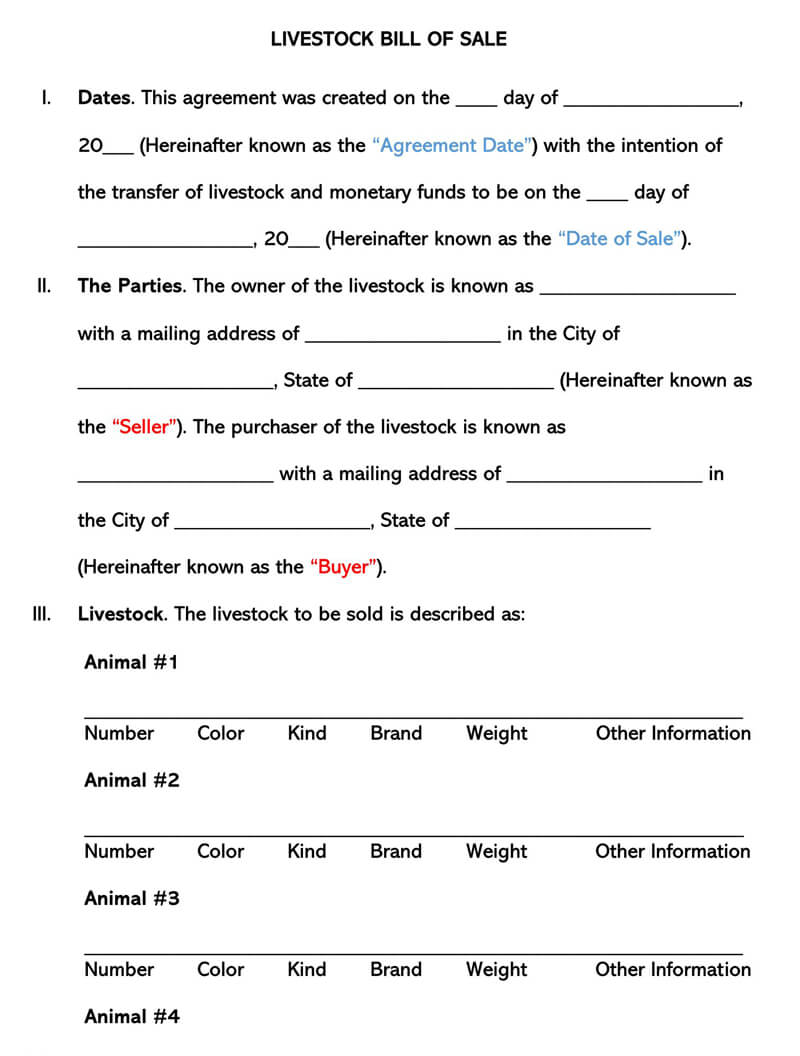
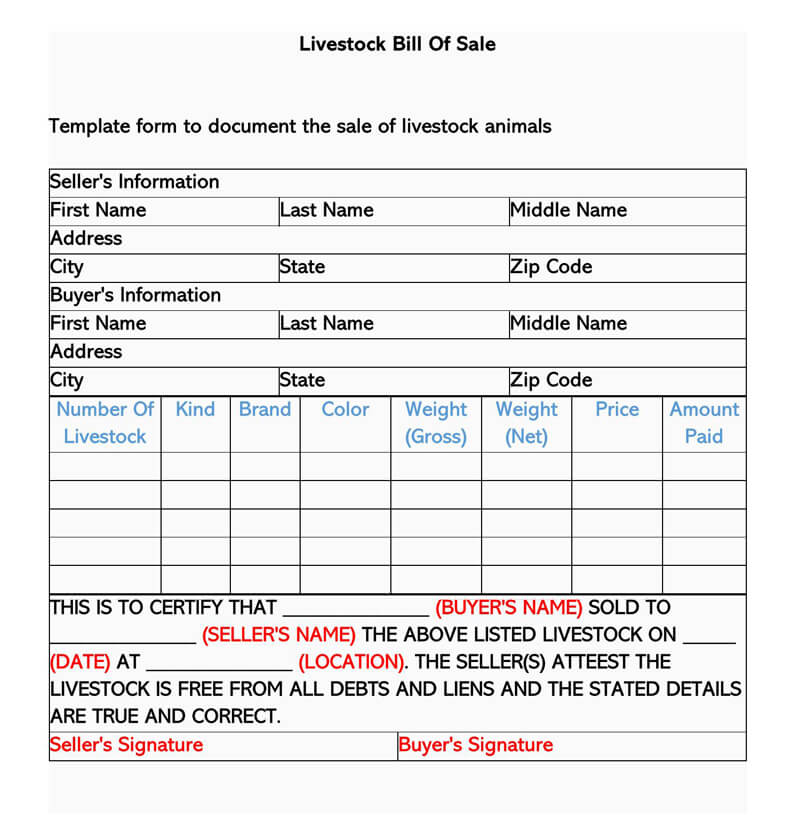
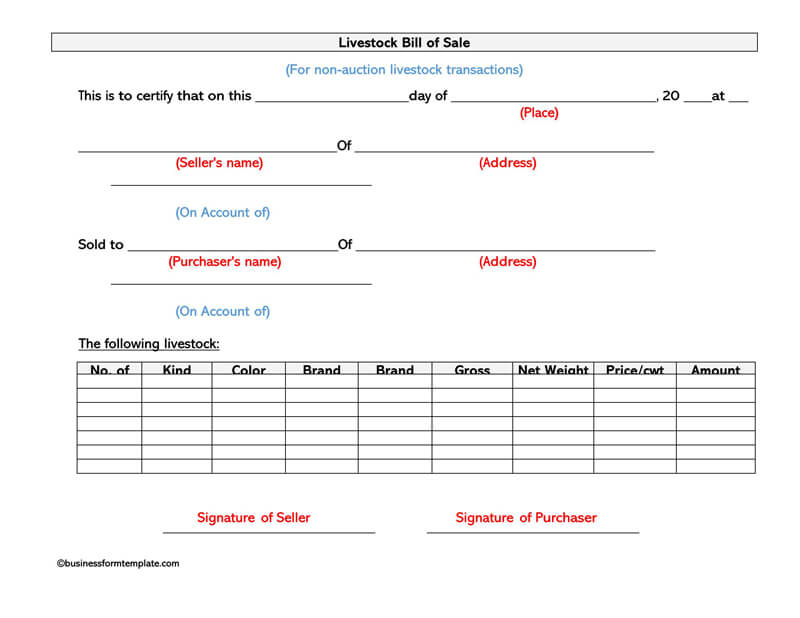
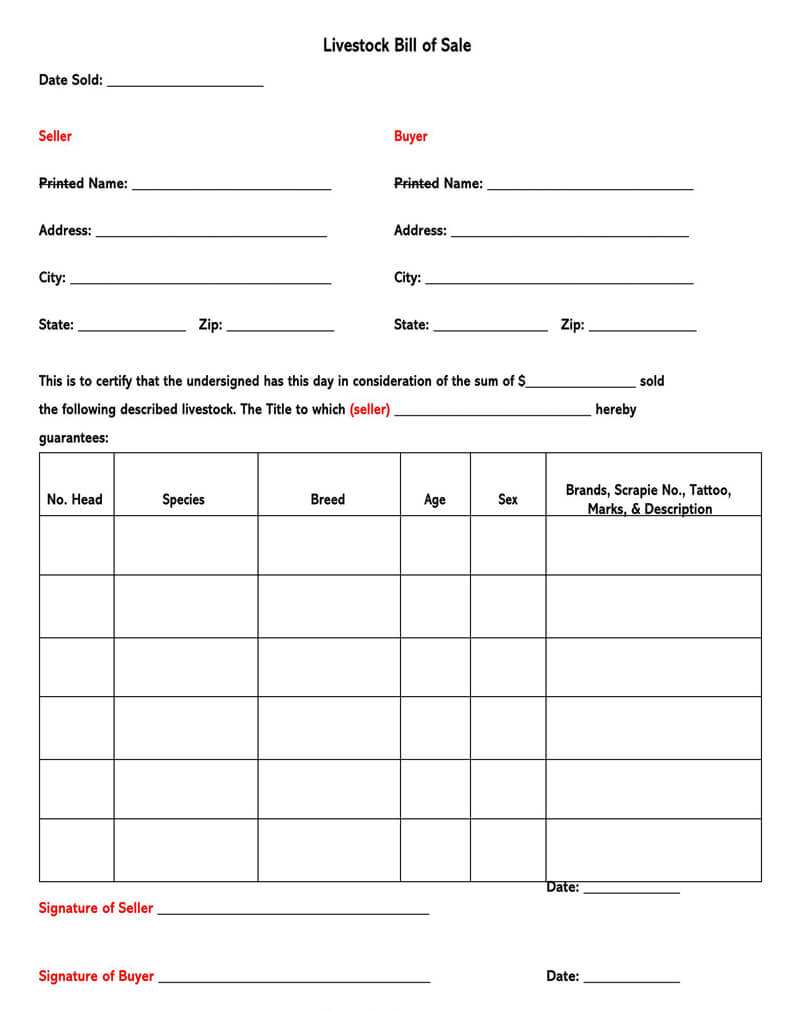
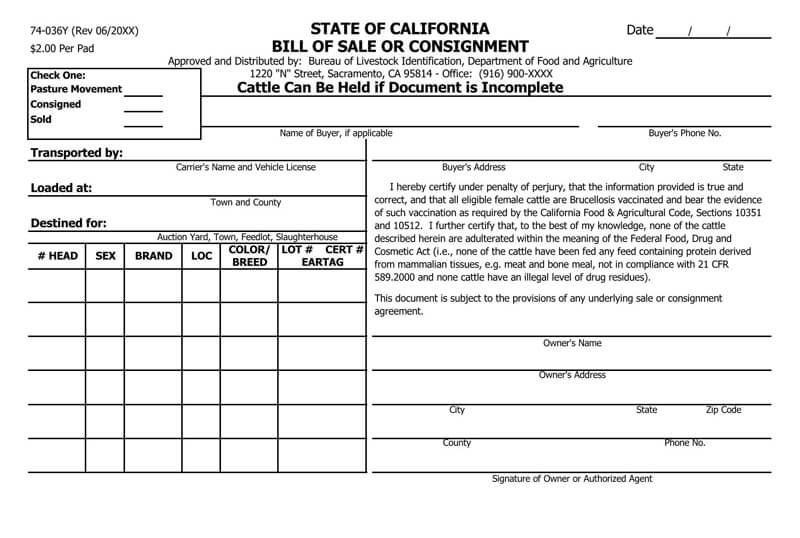
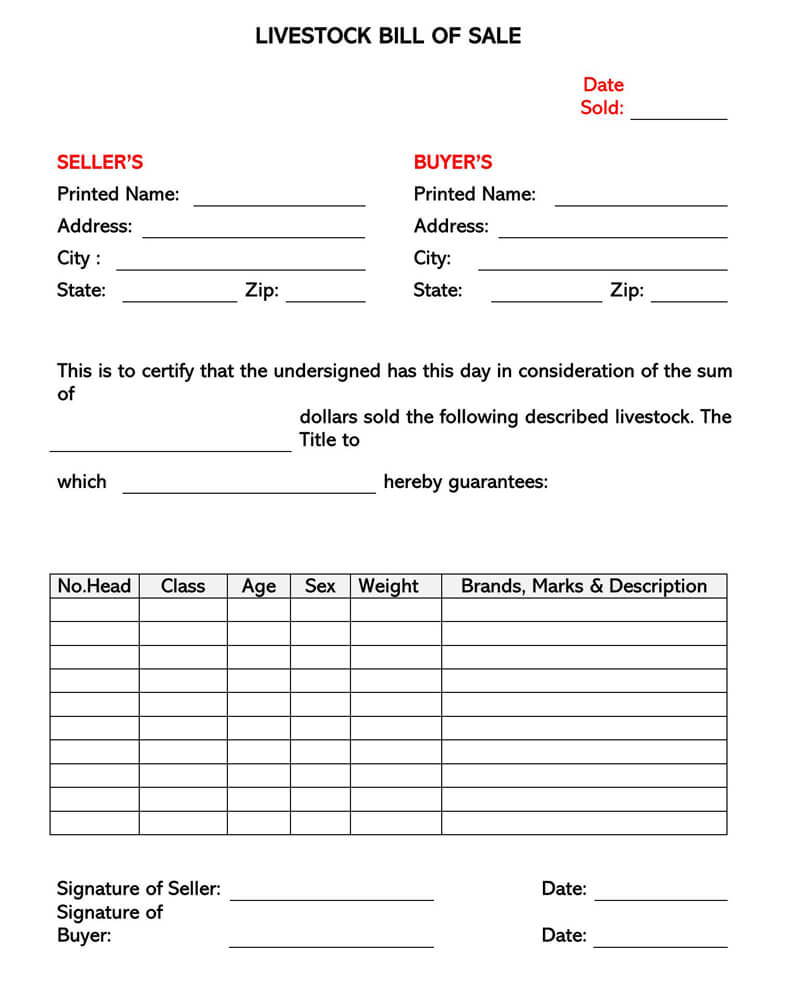
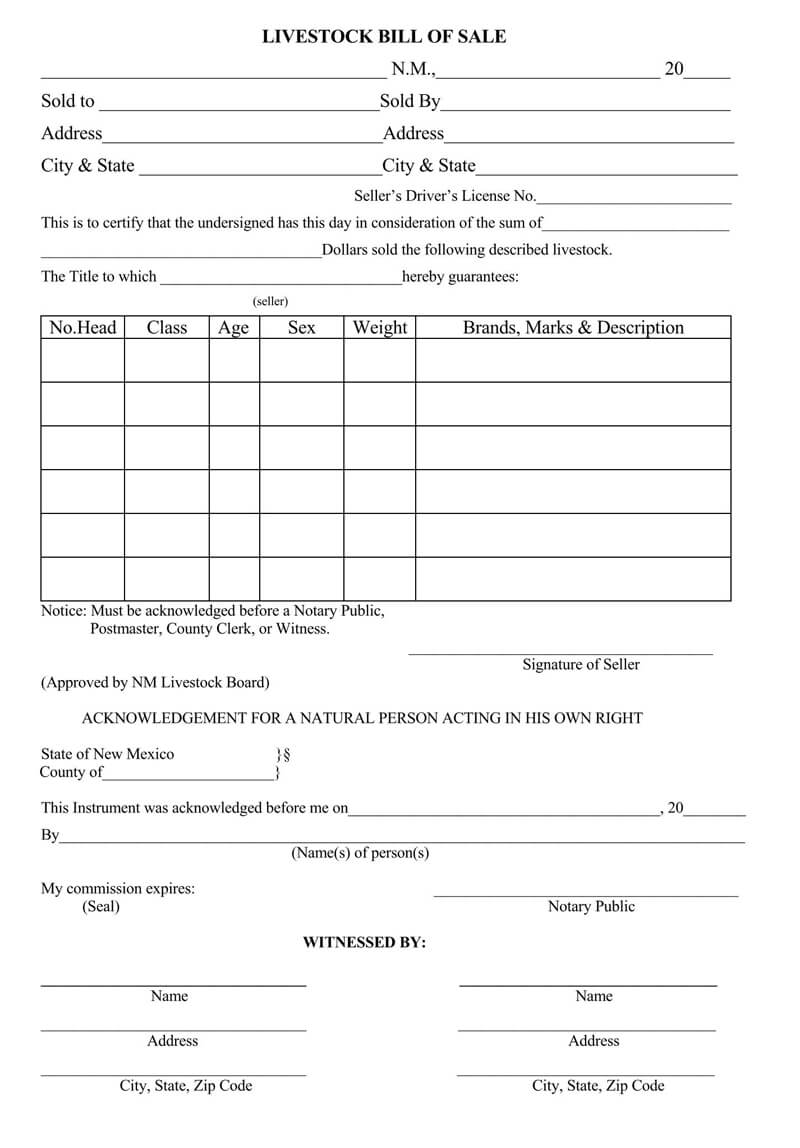
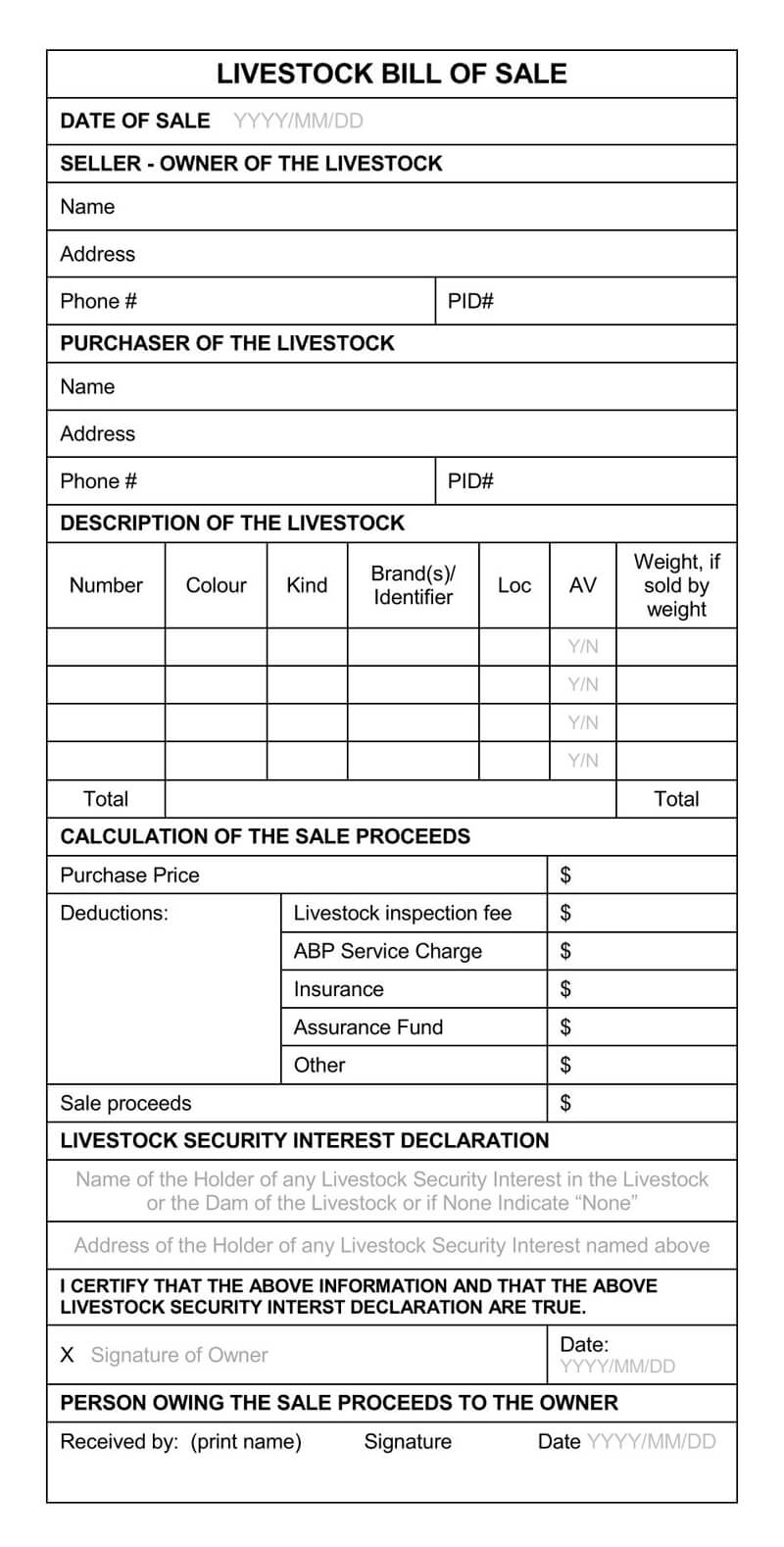
Animals Included in Livestock Bill of Sale
Farm animals are raised or kept mainly for meat and dairy consumption, to generate earnings, and to aid in farm operation. Another name for such animals is Livestock. Livestock is a revenue-generating business. There is always a high consumer demand for animals like cattle, horses, sheep, camels, goats, donkeys, pigs, mules, and poultry, if any are raised on ranches or on meadows. Ultimately these animals are sold in the market, and for transfer documentation a form, also known as bill of sale, must be made.
Why Bill of Sale is Necessary?
Livestock bill of sale necessary for the following reasons:
Proof of transfers
This document is mainly used to prove that the cattle in question was indeed transferred to a new owner. That is because it contains all the details which pertain to the cattle. Also, it displays the names of both the current and the new owner.
Future references
Given that livestock bill of sale contains hard facts about the animals, it also serves as a good reference for any future disputes. For instance, when the new owner wants to transfer it to a third party, that person may ask him to produce the information concerning the original owner.
Litigations and court cases
It is not uncommon for disputes regarding the animals in question to arise later. Yet again, this document comes in handy at such times. It may be used to settle any disputes or argue out a point in a court case.
Taxation purposes
Lastly, of course, is the issue of taxation. Many states and jurisdictions demand that taxes be paid whenever any property changes hands. The information contained in this document may be used for taxation purposes at a later date.
Factors That Influence the Livestock Price
There are many factors that determine the price of an animal. Some are mentioned below:
- Type of Animal: Types include different cattle breeds, buffalos, sheep, goats and chickens, and many other.
- Age: Animals are bought for slaughtering for meat or their dairy products. Young animals fetch a high price as compared to old animals.
- Breed: Good breed animals give high production output. Like, a good breed cow gives more milk, and a good breed horse is strong and more efficient. Good breed animals are kept for enhancement of overall performance and to augment production and profitability.
- Weight: One of the most crucial factors while determining the price of the livestock is the weight of the animals. Considering the fact that the weight represents the health of the animal, healthy and stronger animals have more price.
- Class: Animals according to the category they fall in also impacts their price.Livestock business usually consists of raising cattle, horses, sheep, camels, goats, donkeys, pigs, mules, and any other animals which can bring a good price. The class of the cattle that is used for physical work has a lower price than that used for breeding.
- Sex: In all cases, the sex of the animal is very important in livestock farming. Some animals are raised to produce a dairy product(females), some for meat and some for breeding (usually males). Hence the sex of the animal plays a vital role in defining the price of it. If the dairy products are in demand, then the female animals will have higher prices than the male ones and vice versa.
- Health Status: The first thing which a buyer inspects is the health of the animals and thus the price of the animal depends on it. All animals before they are brought to the marketplace for sale go through veterinary medical inspection. Without the vet health certificate, animals cannot be sold.
- Overall Purpose: Different animals have different purposes. Cattles and buffalos are meant for meat purposes. Whereas cows are meant to produce dairy products. According to the purpose of the animal, the price varies.
Display of Animal(s) and Sale Deal
Before bringing the animals to the marketplace, ensure they are clean and groomed. Clarify any concerns regarding the displayed animals. Bring all the documents relating to the animal, such as registration papers, medical certificates, and two copies of the bill of sale.
Once the consensus is reached between the buyer and seller transaction should be finalized, satisfying both the concerned parties. To complete the deal, the buyer makes an offer, and the seller demands the payment. The best way to accept the payment is cash, and other options can be paid through a banker’s cheque or a reliable online cash payment service.
Information Included in Livestock Bill of Sale Form
It is an important legal document that shows the transaction details. Proper attention must be given when writing details concerning details about the buyer and seller.
Following steps must be taken into consideration:
Step 1: Transaction Date
After completion of all the formalities regarding the sale, mention the date on which the agreement was made and the date on which the livestock and payment of funds will take place.
EXAMPLE
1. Date: This livestock sale/purchase agreement was made on the day (dd)-of mm 20 yy with the purpose of transfer of livestock and payment of funds on —–day of mm –20
Step 2: Details of buyer and the seller.
It is very important that the full name and address of both the buyer and seller are carefully written on the agreement as it appears on a valid photo identification card.
EXAMPLE
2. Buyer and Seller: The owner of the livestock, Mr./Miss/Mrs. Having mailing address ____in the city of ____ in the state of _ from here on called “The Seller” The buyer of the livestock Mr./Miss/Mrs. _ Having mailing address _ in the city of _______in the state of ____ from hereon called the purchaser
Step 3: The livestock
Description of each animal has to be provided in the livestock chart.
In the “Number” column contains the serial number given to the animal. Ear tag, branded, tattooed are given to livestock animals for identification. Branding/tattoo is putting a permanent identifying mark on the hide of an animal but is considered cruelty to animals.
In the second column, you write the “kind” of animal-like cattle, sheep, etc.
“Brand” is the place on the animal where the tag is put.
“Age” is written in years or months.
“Sex” is written male (M) or female (F);
“Weight” is the estimated weight in Kg or Pounds of the animal.
In the column “Notes,” any other remarks or information pertaining to the animal is recorded.
| Numbers | Kind | Brand | Age | Sex | Weight | Notes |
Step 4: Purchase terms
In this step, the agreed amount which the buyer has paid the seller is written on the bill of sale along with the date of sale.
EXAMPLE
4. Terms of Procurement: The price which both the buyer and seller agreed on. The buyer agrees to pay US$ _______on the date of sale
Step 5: Signatures of the buyer and seller
In this step, both the buyer and seller sign their proper signature by hand and print their names underneath. The option of e-signing is also available if required.
Below the signature of buyer and seller are two fields meant for the signatures of two witnesses for further verification.
EXAMPLE
5. Inspection: The buyer has full rights for the inspection of the livestock between the dates of the agreement and the date of sale. If, during the inspection, the buyer finds any defects or misinformation regarding the livestock, under such circumstances, the agreement stands void, and any advance deposit given by the buyer is immediately returned.
SIGNATURES
Seller Printed Name
Seller Signature
Date
Buyer Printed Name
Buyer Signature
Date
NOT OBLIGATORY
Witness Printed Name
Witness Signature
Date
Step 6: Notarization
For further verification of seller and buyer, signatures are notarized. This is not a mandatory requirement.
EXAMPLE
STATE OF ____________
COUNTRY____________
On this ____________day of ____________ before me ____________ personally appeared.
Proofed to me ____________ on the basis of ____________
DO NOT WRITE -TO BE COMPLETED BY A NOTARY PUBLIC ONLY
____________
Witness my hand and official seal.
____________
Notary Public
Important
For this document to be considered valid and admissible, it must be notarized. This entails getting to a public notary and seeking such approval. You just have to walk into the nearest notary office and request such approval. Some jurisdictions may require that you pay some money for this service.
Conclusion
In all business deals, there should be no ambiguity, and all financial matters should be clear. Livestock farming is a long, tedious process. Farmer and Ranchers put great efforts into raising the animals. The whole process involves price determination, the health status of the livestock, and then it reaches the marketplace.
After reaching a consensus with the buyer, the transaction takes place. This form is a formal legal document that ensures both the buyer and seller that the transfer of livestock and payment will take place smoothly. When writing it, all information should be thoroughly checked, and there should not be a delay in transfer and payment.







